3.3 Install SQL Server Express
-
Launch the SQL Server Express installation file.
-
Choose a directory for the extracted files and click OK.
-
Select New SQL Server stand-alone installation or add features to an existing installation.
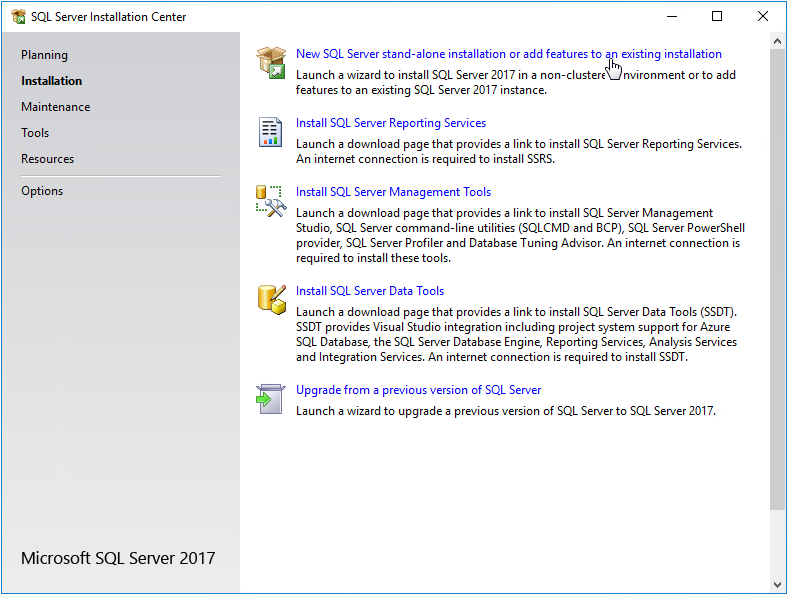
-
In the License Terms page, accept the license terms and click Next.
-
In the Product Updates page, click Next.
-
Select Use Microsoft Update to check for updates (recommended), then click Next.
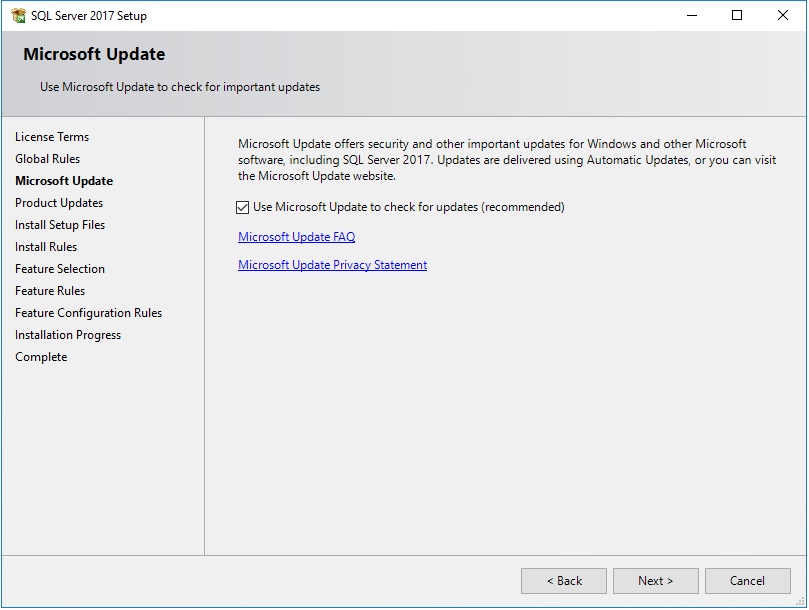
-
In the Install Rules page, click Next.
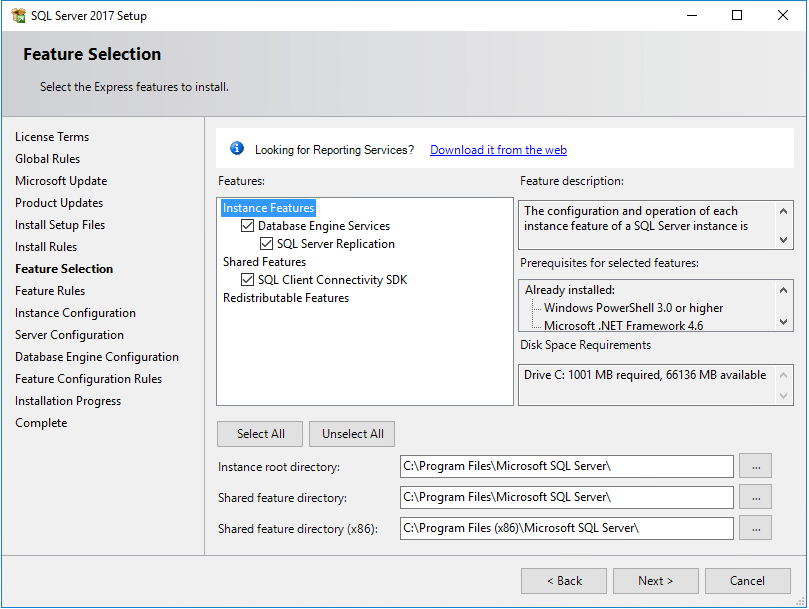
-
Click Unselect All.
-
Select the Database Engine Services check box.
-
In the Instance root directory, Shared feature directory, and Shared feature directory (x86) fields, specify the path where you want to SQL instance to reside.
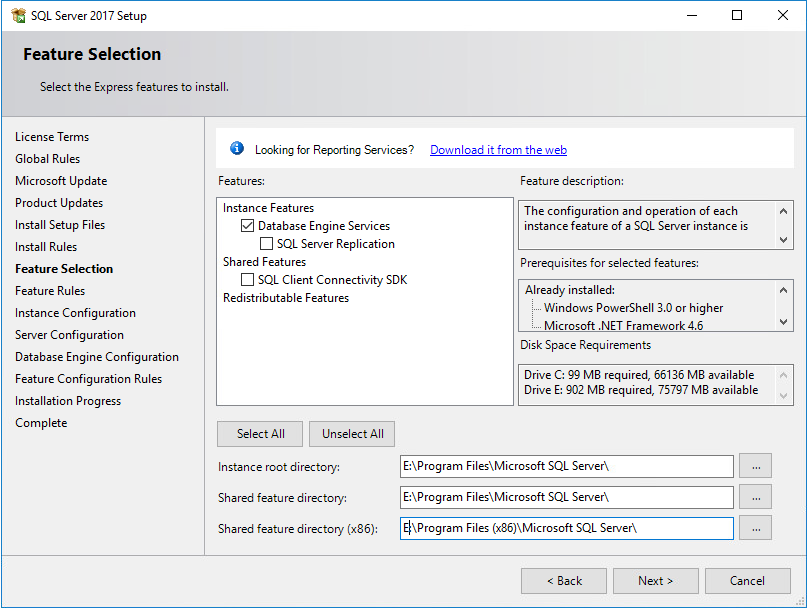
-
Click Next.
-
In the Feature Rules page, click Next.
-
In the Instance Configuration page, click the Named instance option and specify a descriptive name for the instance such as FSFDB and click Next.
-
In the Server Configuration page, click the Collation tab and then click Customize.
-
Click the Windows collation designator and sort order option.
-
From the Collation designator drop-down menu, select an acceptable collation and settings for your locale.
For example, in North America, an acceptable collation would be Latin1_General_100 with the Accent-sensitive check box selected.
We recommend that you select a collation that aligns with the Windows locale of the server where the Engine is installed.For more information on collation and locales, refer to this Microsoft document.
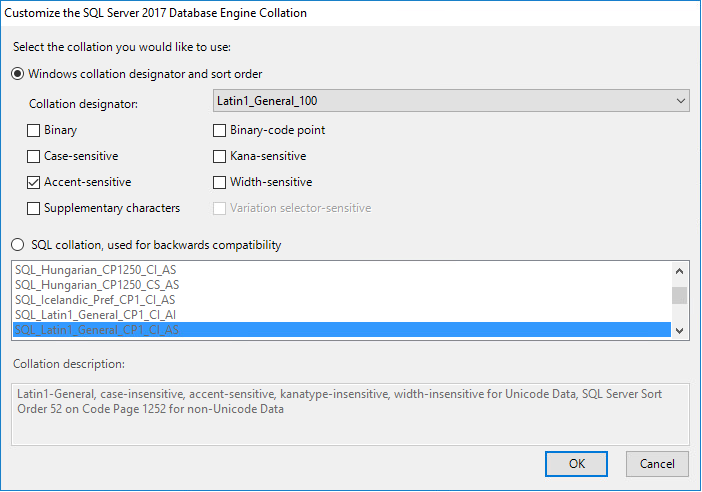
-
Click OK.
-
Click Next.
-
Select the Mixed Mode (SQL Server authentication and Windows authentication) option, enter and confirm an SQL Server administrator password, and then click Add Current User.
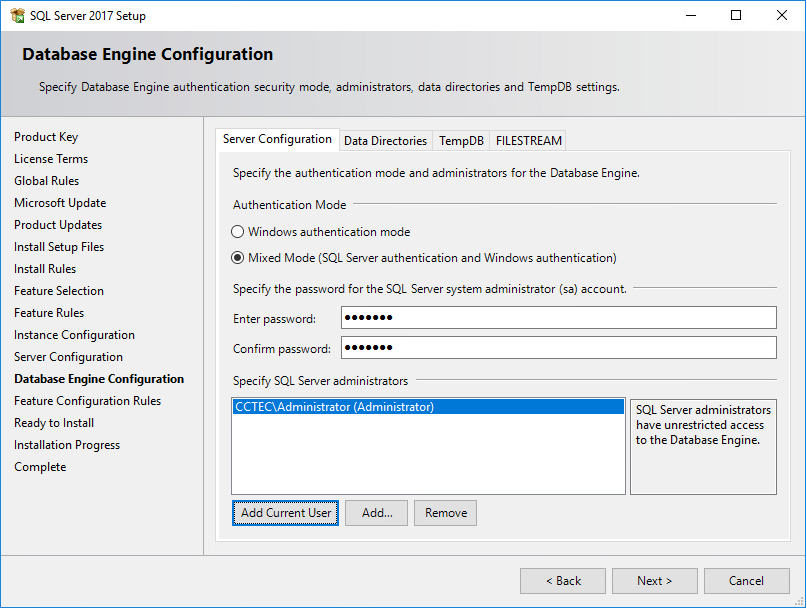
-
Click Next.
-
In the Complete page, click Close.
-
Launch SQL Server Configuration Manager.
-
In the left pane, expand SQL Server Network Configuration.
-
Click Protocols for FSFDB (or the name of the database instance you chose earlier).
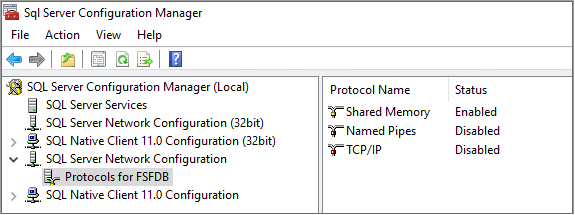
-
In the right pane, right-click TCP/IP and select Enable.
-
In the warning dialog box, click OK.
-
Right-click TCP/IP again and select Properties.
-
Under the IP2 heading, for the Enabled field, right-click to select the drop-down men and change the setting to Yes.
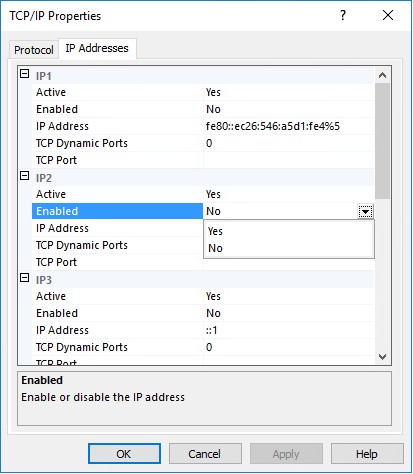
-
Select TCP Dynamic Ports and clear the field so there is no number associated to it.
-
Scroll down to the IPALL heading and for the TCP Port field, and enter 1433.
-
Click Apply.
-
When the warning dialog box appears, click OK.
-
Click OK to close the TCP/IP Properties page.
-
In the SQL Server Configuration Manager, click SQL Server Services.
-
Right-click SQL Server (FSFDB) and select Restart.
-
Close the SQL Server Configuration Manager.
-
Launch Windows Firewall with Advanced Security.
-
From the left column, click Inbound Rules.
-
From the Actions column, click New Rule.
-
In the Rule Type page, select Port.
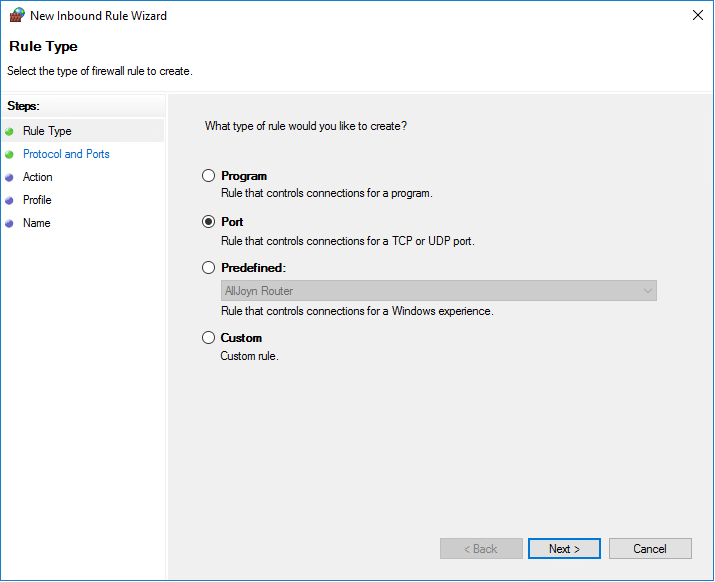
-
Click Next.
-
In the Protocol and Ports page, enter 1433 in the Specific local ports field, then click Next.
-
In the Action page, accept the default setting by clicking Next.
-
In the Profile page, accept the default settings by clicking Next.
-
In the Name page, specify a name for the new inbound rule in the Name field.
For example SQL Server Express.
-
Click Finish.